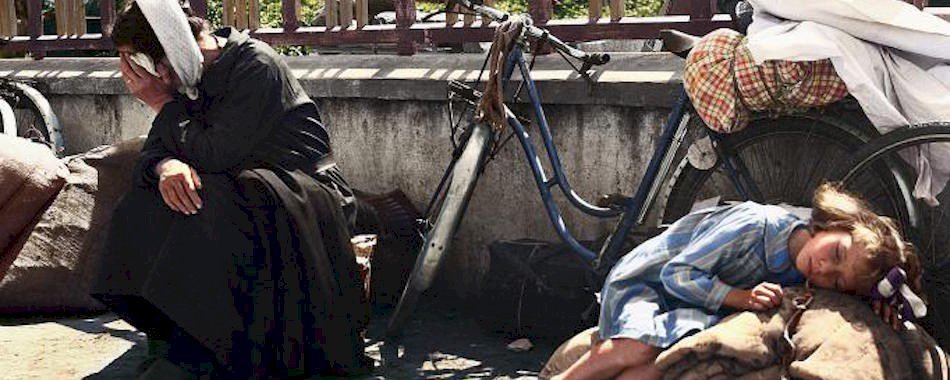La crise des réfugiés à laquelle l'Europe doit faire face rappelle à beaucoup la Seconde Guerre mondiale, quand des millions d’Européens furent forcés de quitter leurs maisons pour fuir la violence et la misère. TIME magazine fait revivre de magnifiques clichés datant de cette époque en leur redonnant de la couleur. Des photos qui donnent à voir une nouvelle perspective...
 En 1944, des Portugais arrivent à Philadelphia, Etats-Unis.
En 1944, des Portugais arrivent à Philadelphia, Etats-Unis.
 Août 1944, un homme tire la poussette d'une réfugiée, à Roncey, France. (Photo by Fred Ramage/Keystone/Getty Images)
Août 1944, un homme tire la poussette d'une réfugiée, à Roncey, France. (Photo by Fred Ramage/Keystone/Getty Images)
 Une famille de réfugiés belges se soutiennent alors qu'ils croisent un véhicule militaire, pendant qu'ils se dirigent vers la France. (Photo by Three Lions/Getty Images)
Une famille de réfugiés belges se soutiennent alors qu'ils croisent un véhicule militaire, pendant qu'ils se dirigent vers la France. (Photo by Three Lions/Getty Images)
 Des réfugiés belges portent leurs affaires, alors qu'ils fuient l'armée allemande, janvier 1945. (Photo by Three Lions/Getty Images)
Des réfugiés belges portent leurs affaires, alors qu'ils fuient l'armée allemande, janvier 1945. (Photo by Three Lions/Getty Images)

 Des réfugiés français qui retournent chez eux à Saint-Pois en France font une pause au bord de la route, après que les Allemands ont été chassés par les forces américaines. (AP Photo)
Des réfugiés français qui retournent chez eux à Saint-Pois en France font une pause au bord de la route, après que les Allemands ont été chassés par les forces américaines. (AP Photo)
 Un groupe de réfugiés dans une rue de La Gleize, en Belgique, le 2 janvier 1945. Ils attendent d'être déportés par les Américains de la ville ravagée par les Allemands. (AP Photo/Peter J. Carroll)
Un groupe de réfugiés dans une rue de La Gleize, en Belgique, le 2 janvier 1945. Ils attendent d'être déportés par les Américains de la ville ravagée par les Allemands. (AP Photo/Peter J. Carroll)
 14 décembre 1945, des Polonais qui ont marché jusqu'à Berlin pour chercher de la nourriture et un toit. Ils attendent au bord des rails, dans l'espoir d'être aidés par un train de l'armée britannique. (Photo by Fred Ramage/Keystone/Getty Images)
14 décembre 1945, des Polonais qui ont marché jusqu'à Berlin pour chercher de la nourriture et un toit. Ils attendent au bord des rails, dans l'espoir d'être aidés par un train de l'armée britannique. (Photo by Fred Ramage/Keystone/Getty Images)
 Des déportés dans un camp Allemands. (Photo by Fred Ramage/Keystone/Getty Images)
Des déportés dans un camp Allemands. (Photo by Fred Ramage/Keystone/Getty Images)
 Des déportés qui traversent un pont de la rivière Elbe à Tangermunde - explosé par les Allemands - pour échapper au chaos des frontières allemandes causé par l'approche des Russes. (Photo by Fred Ramage/Keystone/Getty Images)
Des déportés qui traversent un pont de la rivière Elbe à Tangermunde - explosé par les Allemands - pour échapper au chaos des frontières allemandes causé par l'approche des Russes. (Photo by Fred Ramage/Keystone/Getty Images)
Plus de photos en noir et blanc en page 2
[caption id="attachment_128002" align="alignnone" width="497"]
 [/caption]
[/caption]

 TIME
TIME